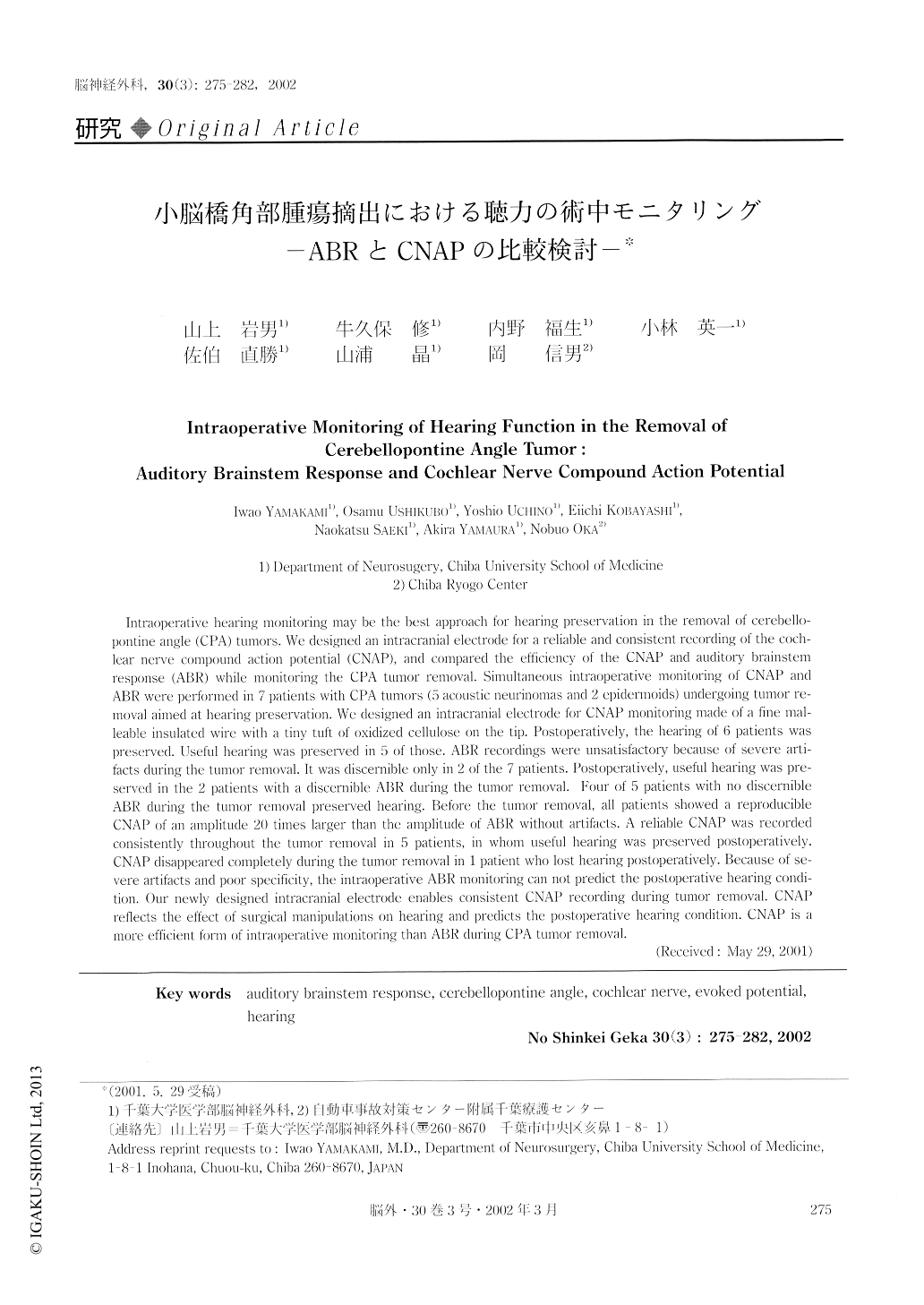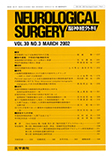Japanese
English
- 有料閲覧
- Abstract 文献概要
- 1ページ目 Look Inside
Ⅰ.はじめに
診断機器・手術手技の進歩により聴力を温存した小脳橋角部腫瘍の摘出が可能となっている.聴力の術中モニタリングは聴力温存率の向上に有用と考えられるが,術中モニタリングと聴力温存率の有意な関係は認めないとの報告もある9).聴力の術中モニタリングに用いる聴覚誘発反応には,ABR:auditory brainstem response,ECoG:electro-cochleography,CNAP:cochlear nerve compoundaction potentialがある.
ABRは最も普及した術中モニタリングであるが,頭皮上電極から得られるfar-field potentialで電位が1μV以下と小さく,加算解析が必要であり,real-timeとなり得ないという欠点がある2).ECoGでは,電極を鼓膜穿刺し中耳内壁の岬角promontoryに留置することにより,蝸牛の電気活動をABRに比べsignal/noise(S/N)の良好な電位として,ほぼreal-timeに記録できる10,15,17,20,22).CNAPでは蝸牛神経上を伝導する誘発電位を,蝸牛神経上に置いた電極からほぼreal-timeに記録できる.CNAPは1980年代に聴力の術中モニタリングとして報告されたが12,23),その後あまり普及しなかった.
Intraoperative hearing monitoring may be the best approach for hearing preservation in the removal of cerebellopontine angle (CPA) tumors. We designed an intracranial electrode for a reliable and consistent recording of the cochlear nerve compound action potential (CNAP), and compared the efficiency of the CNAP and auditory brainstem response (ABR) while monitoring the CPA tumor removal. Simultaneous intraoperative monitoring of CNAP and ABR were performed in 7 patients with CPA tumors (5 acoustic neurinomas and 2 epidermoids) undergoing tumor removal aimed at hearing preservation.

Copyright © 2002, Igaku-Shoin Ltd. All rights reserved.


